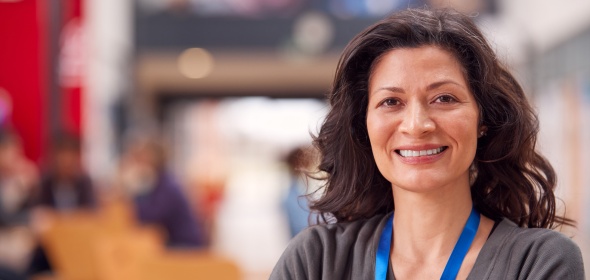Reprinted with permission by Monterey County Now.
By Sara Rubin
Orlando Elizondo has spent a lot of time thinking about how health care is delivered – not in doctor’s offices or emergency rooms, but in the streets, at your front door, at church. He is a consultant whose clients include UC San Francisco, where a years-long effort at the Healthforce Center has been looking at the effectiveness of community health workers. These are not doctors or nurses, but something like a hybrid of patient advocates and educators, or as they have been known, “barefoot doctors.”
They live in and know the community they serve and their tasks can range from helping patients book appointments, getting prescriptions, interpreting a doctor’s comments into a different language and more. And they’re generally deployed to serve the people who suffer disparately from poor health, and also have the hardest time accessing health care.
“If you’re a middle – to upper-middle class Monterey County resident, you are going to be savvy enough, and you have enough social capital to move a system if it’s not responding to you. That is not true when you are poor,” Elizondo says.
Community health workers can be a cost-effective way of improving health in unhealthy communities, and they can be more effective in moving the needle on health. “As a community health worker, you have street cred that no one else has,” Elizondo says. “You can read between the lines, and that’s the secret sauce of what makes a CHW so valuable.”
But unlike other health workers – doctors, nurses, phlebotomists, respiratory therapists, etc. – there is not a standardized training for community health workers. Elizondo and the team at UCSF hope to change that, starting with a new 144-hour program that will launch in October in Monterey County, with a cohort of 30 students.
The program will be funded by a grants of about $200,000 from the Blue Shield of California Foundation and $143,000 from the Monterey County Workforce Development Board.
Susan Chapman, a professor in the school of nursing at UCSF and a researcher on this project, thinks of this as a test case for the Blue Shield foundation: “Part of their interest in doing this is to see, is it a workforce development model that could be used elsewhere?”
There are reasons that community health workers haven’t been more widely utilized in the health care system, but they’re all bad bureaucratic reasons, like billing and insurance. Those are starting to change – for example, in 2022, California will start reimbursing for CHW services provided to Medi-Cal patients. The shift gives Chapman hope.
“We’re kind of at the crossroads,” she says. “We need more people who make this connection to the community, who make them healthy. And it’s not just about healthy [people], it’s about healthy communities. That’s the unique role of community health workers. And I think there will be more call for this once the curriculum is somewhat standardized.”
Chapman, along with her colleague Jackie Miller, a research data analyst, will survey the participants in Monterey County’s training to evaluate its effectiveness. Partner organizations are Doctors on Duty, Salinas Valley Memorial Healthcare System and Montage Medical Group – none are obligated to hire CHWs who graduate from the training, but have expressed interest in doing so. (A five-week internship follows the virtual training.)
The launch was delayed due to the pandemic, but in some ways, it makes the timing even better. If I had heard of community health workers before COVID-19, I’m not sure I really knew what they did. Just a few weeks ago, a group of community health workers employed by the county’s VIDA program knocked on the door of my house. They had time to chat – about COVID vaccines, but also poetry. They made it clear in just a few minutes that they are my allies. They’ve been doing door-knocking like this throughout the county, trying to boost Covid-19 vaccination rates in the communities where that is lowest.
“This is the perfect time to be doing something like this, because we have people’s attention,” Elizondo says.
The deadline to register for the training is Sept. 20. To apply, call 296-2220.
Join Us
Sign up to learn about the latest health workforce research insights and leadership opportunities from Healthforce Center, an organization dedicated to helping health care organizations drive and navigate change.
